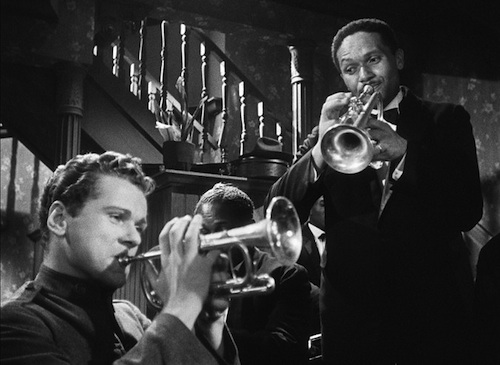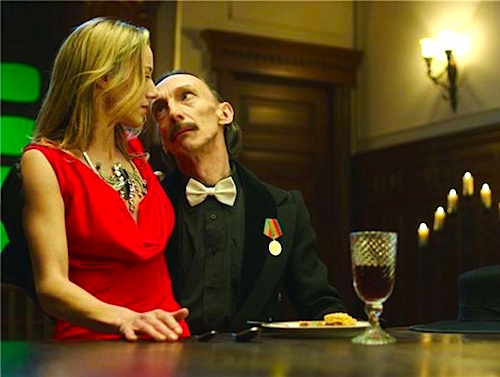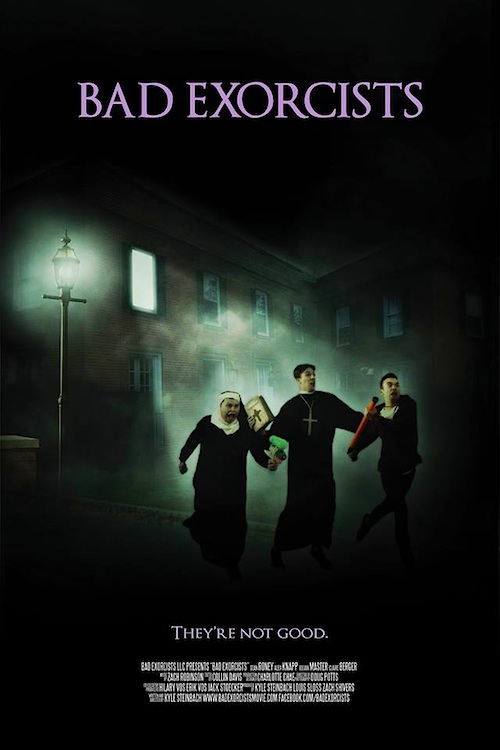By Joe Bendel. In the 1990s, there were no suburbs per se, where upper middle class residents of Metro Manila could retreat from crime. Instead, affluent gated enclaves sprung within the urban sprawl. In most cases, the gates kept the criminal element out, but in the case of Eden Homes, the insanity is fenced in. Words fail to describe the madness that is Timmy Harn’s Reptilia in Suburbia, which screens as part of the 2015 edition of New Filipino Cinema at the Yerba Buena Center for the Arts.
Dr. Dimalanta is a Satanic mad scientist who keeps Jake, a serial killer “gimp” chained up in his living room. Jake is mostly likely responsible for a rash of canine murders that have recently terrorized Eden Homes, but what really has some of the Borromeos distressed is Alan the underachiever’s decision to move back in with his mother. Her favored grown son Greg is openly contemptuous of his brother, but at least the Borromeo cousins get along reasonably well. Greg’s son and daughter even introduce the eczema suffering Jasper to weed, but he is more interested in helping Brook Lyn, the girl next door, find her missing lap dog. At least, that is an attempt to impose some narrative structure on Reptilia’s unruly tripppiness.
Frankly, Reptilia just might be a work of demented genius. The demented part is certainly beyond question. Harn deliberately gives it the look of a hacked-up grade-Z DIY flick, as if seen on an old school UHF channel, received through a coat-hanger wrapped in tin foil. You can tell extraordinary effort was expanded to craft such a consistently dingy look, because any other ultra-grubby indie would try to find some way to look more polished than its budget constraints would allow. In fact, the unity of Harn’s vision is strangely impressive.

Despite the lack of continuity and structural logic, Harn’s game cast takes their roles quite seriously, including trailblazing Filipino animator and independent filmmaker Roxlee unleashing his inner Angus Scrimm as “Waldo” Dimalanta. There are a lot of whacked out things happening throughout the film, but the chemistry shared by the young cast members is actually rather winning.
Cinematographer Danilo Salas III, editor Sandra Santiago, and Harn’s post team make Reptilia look like it is on scratchy, crackly film stock that barely survives the decay of age and neglect. It feels more like an artifact of a mad outsider artist than a proper film. Yet, it is much more watchable than it sounds, once viewers acclimate themselves to Harn’s idiosyncratic aesthetic.
In all honesty, anyone whose tastes are remotely conventional should skip Reptilia, or risk having their heads explode. On the other hand, anyone who seriously follows cult cinema should see it, just so they can say they have seen it. Defying all sense of reason and good taste, Reptilia in Suburbia is required viewing for those who are still reading when it screens this Sunday (6/21) as part of New Filipino Cinema 2015 at the Yerba Buena Center for the Arts in San Francisco.
LFM GRADE: B+
Posted on June 13th, 2015 at 11:54am.




